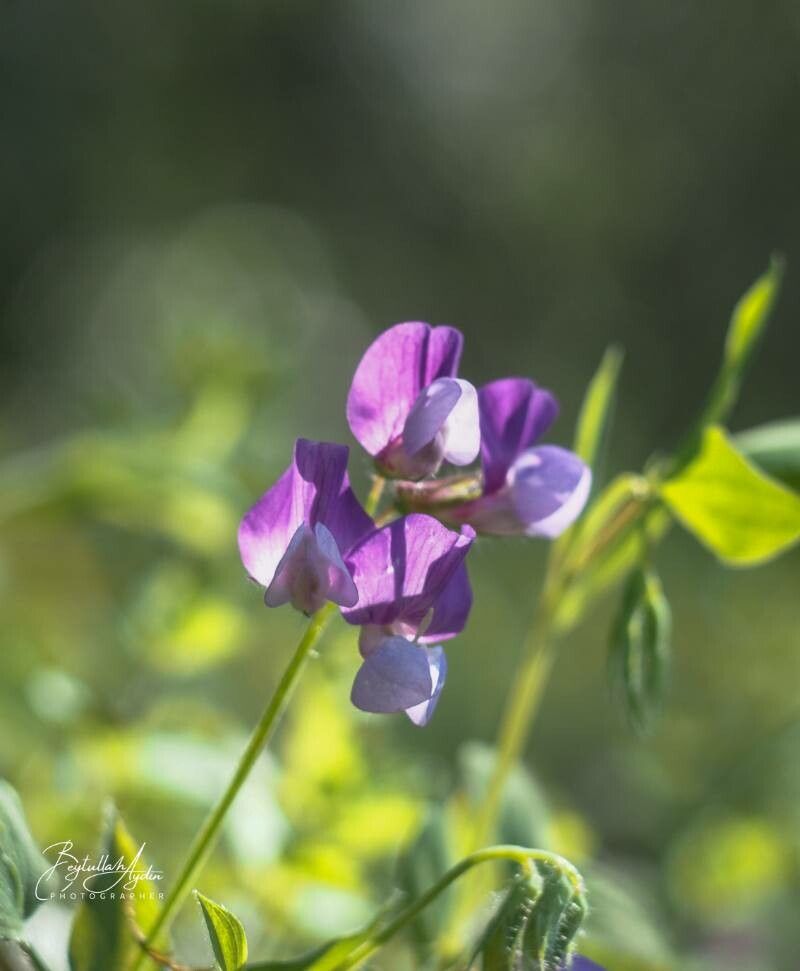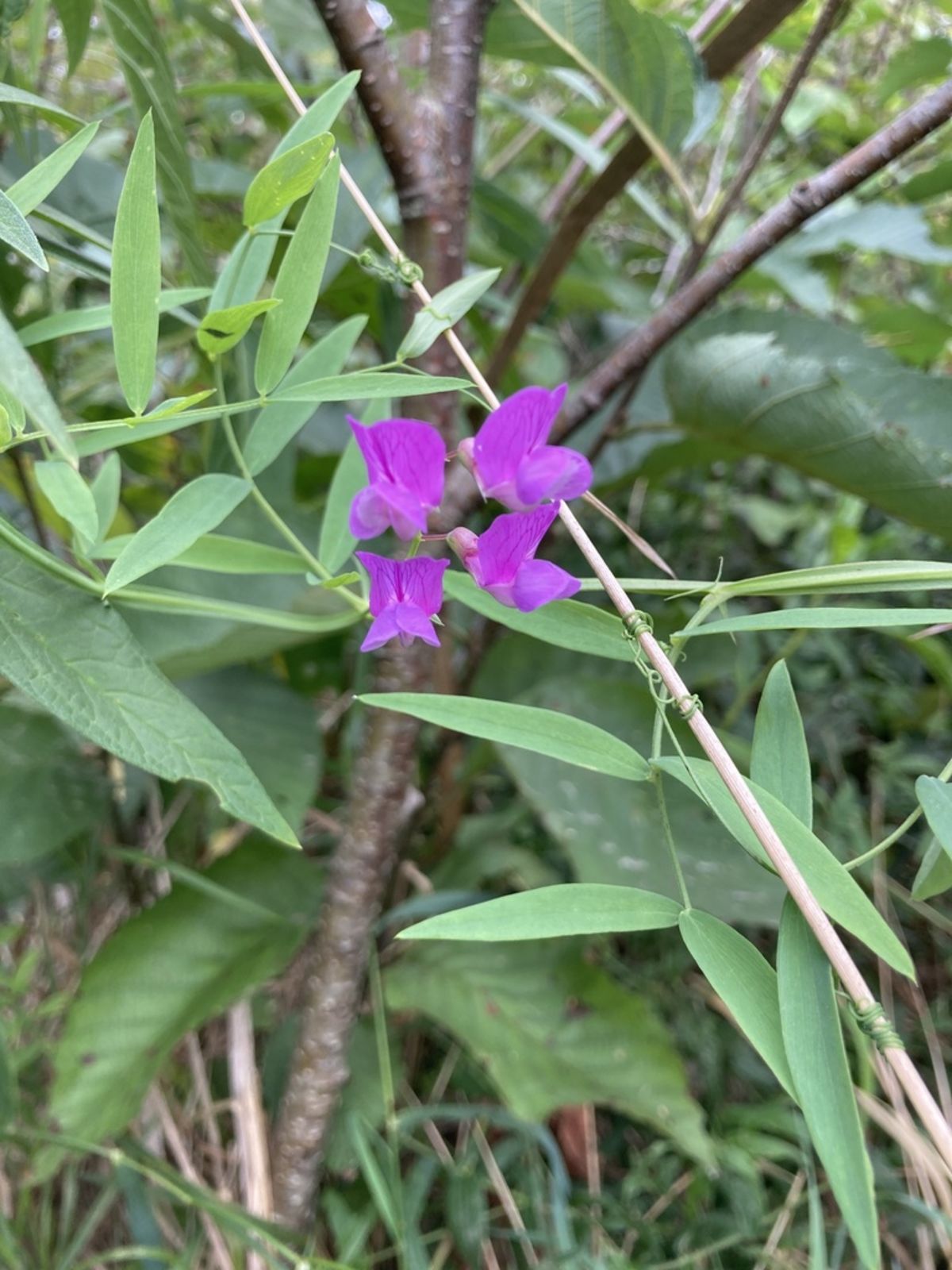Marsh Pea
lathyrus palustris
Also known as: ["Marsh Vetchling","Swamp Pea"]
Overview
A herbaceous perennial legume native to wetlands and marshy areas, known for its climbing habit and pea-like flowers.
Benefits & Perks
["wildlife attractant (bees, butterflies, birds)","drought tolerant","shade tolerant"]
Botanical Classification
| Phylum: | Magnoliophyta |
| Class: | Magnoliopsida |
| Order: | Fabales |
| Family: | Fabaceae |
| Genus: | Lathyrus |
| Botanical Name: | Lathyrus palustris |
Plant Characteristics
Basic Information
- Category: Flowers
- Suitable Location: moist meadows, stream banks, or garden beds with consistent moisture
- Suitable For:
- Is Weed: No
- Allergenicity: low
Environmental Needs
- Climate: {"temperatureRange":"0–30°C"}
- Hardiness: {"zones":"3–7"}
- Misting: rarely required, only if ambient humidity is very low
- Drainage: Well-draining to moderately draining; avoid heavy clay soils.
- Soil Type: Rich, loamy soil with good organic matter; well-draining to prevent waterlogging.
Maintenance Level
- Maintenance Level: moderate
- Toughness Level: moderate
- Pruning Frequency: Light pruning can be done as needed; major pruning in late winter or early spring before new growth begins.
- Pruning Intensity: Light to moderate; avoid heavy pruning unless necessary to control size or shape.
Care Details
Ideal Sunlight Coverage:
Full sun to partial shade (4–6 hours of direct sunlight daily); tolerates partial shade in hotter climates.
Sunlight Tolerance Tips:
Acclimate gradually to direct sun to avoid scorching; provide afternoon shade in hot regions; adjust indoor placement to mimic natural light conditions.
Care Requirements
Care Difficulty
moderatemoderate
Sunlight
full sun to partial shade
Rotate plant for even growth; use sheer curtains to filter intense light; avoid direct afternoon sun in summer.
Watering
every 5–7 days during active growth, reduce in winter
Water thoroughly but allow soil to dry between waterings; avoid overhead watering to prevent fungal issues; ensure proper drainage.
Soil
moist, well-drained, rich in organic matter
pH: Slightly acidic to neutral (pH 6.0–7.0).
Ensure soil is not waterlogged; amend with organic matter for fertility; check pH periodically.
Temperature
Prefers cool to moderate temperatures (60–75°F or 15–24°C); can tolerate cooler spring and fall conditions.
Monitor temperature changes; adjust watering and light accordingly; protect from extreme cold or heat.
Fertilizing
every 4–6 weeks during growing season
Apply fertilizer after watering to prevent root burn; stop fertilizing when plant is dormant; use organic options for gentle feeding.
Propagation
Methods
Stem cuttings or seed propagation; stem cuttings are faster and more reliable.
Step-by-Step Propagation Guide
- Take a 4–6 inch cutting with at least two nodes.
- Remove lower leaves.
- Dip in rooting hormone (optional).
- Plant in medium.
- Keep moist and warm.
Best Time: Spring or early summer when the plant is actively growing.
Environment
Warm, humid environment with indirect light; maintain consistent moisture.
Medium
Well-draining potting mix with perlite or sand; can also root in water initially.
Hormone
Rooting hormone is optional but recommended for faster root development.
Timeline
Roots may appear in 2–4 weeks; new growth in 6–8 weeks; full establishment in 3–4 months.
Tools Needed
Pruning shears, rooting hormone, small pots, well-draining soil mix, misting spray bottle.
Quick Tips
Use sharp, clean tools to prevent infection; maintain high humidity with a plastic bag or dome; avoid direct sunlight during rooting.
Pruning & Repotting
Pruning Guide
Method
Pinch back tips to encourage branching; cut back leggy stems to a healthy bud or node; remove dead or damaged growth.
Pruning Plan
Prune to maintain shape, encourage bushier growth, and remove dead or diseased parts; focus on removing spent flowers to promote reblooming.
Tools
Pruning shears, sharp scissors, gloves.
Checklist
Sanitize tools; prune dead or diseased parts; shape as needed; remove spent flowers; clean up debris.
Repotting Guide
Best Season
Early spring before active growth begins.
Pot Size
Choose a pot one size larger (1–2 inches wider in diameter) than the current one.
Method
Remove plant gently; trim any circling roots; place in a new pot with fresh soil; water thoroughly after repotting.
Suggestions
Repot every 2–3 years or when roots fill the pot; beneficial for container-grown plants to refresh soil and provide space.
Checklist
Select appropriate pot; prepare new soil mix; water plant before repotting; handle roots carefully; place in appropriate light after repotting.
Advanced Care Tips
Watering Mastery
Watering Checklist
Check soil moisture; water deeply; ensure drainage; avoid wetting leaves; water in morning.
How to Apply Water Properly
Water at the base of the plant, targeting the root zone; water until it drains from the bottom; avoid wetting foliage; water in the morning for optimal absorption.
Watering Schedule Tips
Water deeply once the top inch of soil is dry; increase frequency during hot, dry periods; reduce in winter to prevent root rot.
Soil Improvement
Add compost or well-rotted manure to enhance fertility; mix in perlite or sand for better drainage; avoid compacting soil.
Temperature Stress Management
Signs of Temperature Issues
Yellowing leaves (cold stress); wilting or leaf drop (heat stress); stunted growth.
Cold Stress
Slows growth; may cause leaf discoloration; roots can become waterlogged in cold, wet soil.
Solution: Provide winter protection with mulch; avoid overwatering in cold weather; move potted plants to a sheltered location.
Hot Stress
Leaves may wilt or scorch; flowers may drop prematurely; growth may slow or stop.
Solution: Provide shade during peak heat; increase watering frequency; ensure good air circulation.
Fertilizing Guide
Fertilizing Checklist
Check fertilizer type; dilute properly; apply during growing season; avoid winter feeding.
Fertilizing Method
Use a balanced, water-soluble fertilizer diluted to half strength; fertilize every 4–6 weeks during growing season (spring and summer); avoid fertilizing in winter.
Common Problems & Solutions
Toxicity Warning
Cats
Slightly ToxicCats may experience mild gastrointestinal distress or neurological effects if they consume significant amounts of Lathyrus palustris seeds or pods. The neurotoxic compounds present are less likely to cause severe effects in cats compared to humans or other animals.
⚠️ Symptoms:
🌿 Toxic Parts:
⚡ Toxic If:
if eaten
Dogs
Slightly ToxicIn dogs, ingestion of Lathyrus palustris seeds or pods may lead to mild gastrointestinal upset and, in rare cases, neurological symptoms due to the presence of neurotoxic amino acids. The risk is generally low unless large amounts are consumed.
⚠️ Symptoms:
🌿 Toxic Parts:
⚡ Toxic If:
if eaten
Humans
Slightly ToxicLathyrus palustris contains small amounts of neurotoxic amino acids that can cause lathyrism, a condition affecting the nervous system, particularly with prolonged or excessive consumption. The effects are generally mild unless large quantities are ingested over time.
⚠️ Symptoms:
🌿 Toxic Parts:
⚡ Toxic If:
if eaten
Frequently Asked Questions
Q: Is Lathyrus palustris toxic to pets?
A: Yes, it is mildly toxic to dogs and cats if ingested.
Q: Where does Lathyrus palustris grow best?
A: It thrives in wetlands, marshy areas, and other moist, partially shaded environments.
Q: Does Lathyrus palustris attract wildlife?
A: Yes, it attracts bees, butterflies, and birds, making it a valuable addition to wildlife gardens.
Quick Reference
| Family: | Fabaceae |
| Care: | moderate |
| Light: | full sun to partial shade |
| Water: | every 5–7 days during active |
Get Expert Care Tips
Download the Plantious app for personalized care reminders and plant identification!
Google Play App Store






